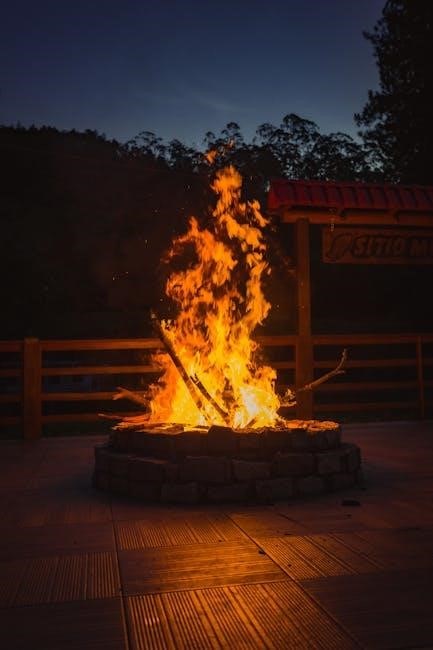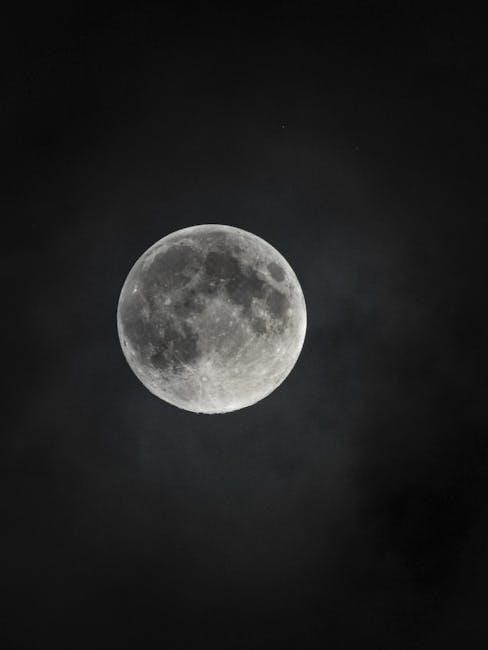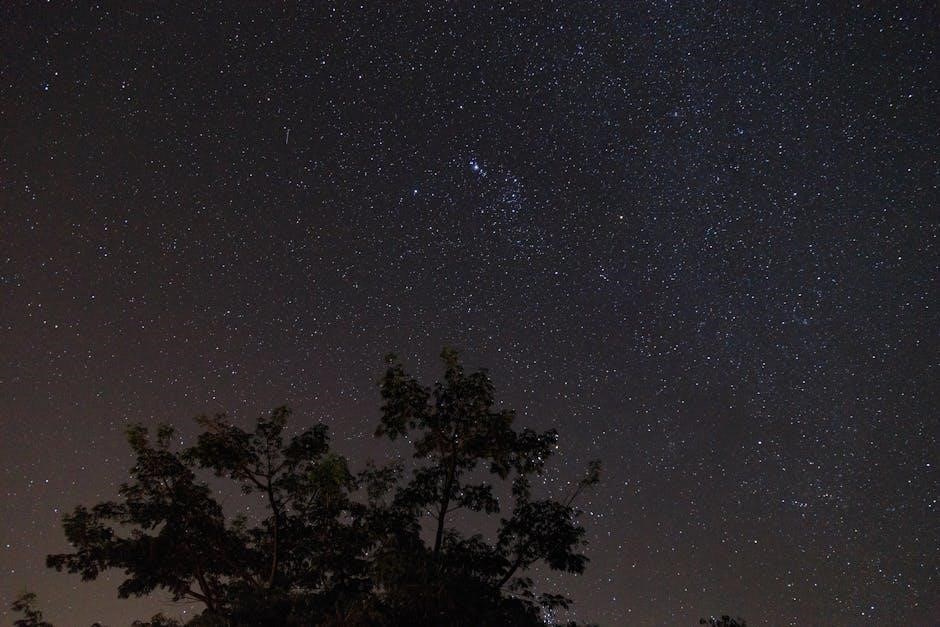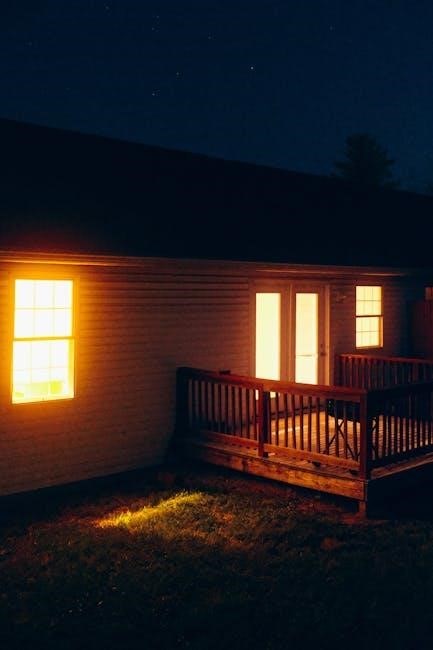Welcome to the enchanting world of backyard stargazing! With just a few tools and a dark sky, you can explore constellations, planets, and celestial wonders right from your backyard. Start your journey with easy-to-find constellations and discover the magic of the night sky.
Getting Started with the Night Sky
Begin your stargazing journey by finding a dark spot with minimal light pollution. Start with the naked eye or binoculars to observe the brightest stars and constellations. Download a stargazing app to help identify what’s visible in your area. Begin with easy-to-spot constellations like the Big Dipper or Orion, then use star-hopping to find nearby patterns. Be patient, as your eyes may take 20 minutes to fully adjust to the dark. Keep a notebook to record your observations and track your progress. This simple yet rewarding process will deepen your connection to the night sky and inspire further exploration.

Best Viewing Conditions for Stargazing
Clear, dark skies and stable weather are essential for optimal stargazing. Avoid nights with heavy cloud cover and ensure minimal light pollution for the best views.
Importance of Dark Skies and Clear Weather
Dark skies and clear weather are crucial for backyard stargazing; Light pollution can obscure faint stars, while clouds block the view entirely. Seek locations with minimal artificial light and stable atmospheric conditions. Even in urban areas, finding a spot away from streetlights can enhance visibility. Clear skies allow unobstructed views of celestial objects, making it easier to identify constellations and observe planets. For the best experience, plan your sessions during weather forecasts promising clarity and spend time allowing your eyes to adapt to the dark. This ensures a richer, more immersive stargazing experience.

Essential Tools for Backyard Astronomy
Telescopes, binoculars, and stargazing apps are must-haves for backyard astronomy. Telescopes bring distant objects closer, while binoculars offer a portable alternative. Apps help identify constellations and celestial events, enriching your stargazing experience.
Telescopes, Binoculars, and Stargazing Apps
Telescopes are powerful tools for backyard astronomy, allowing you to view distant planets, stars, and galaxies with clarity. Binoculars are excellent for beginners, offering a wide field of view to explore star clusters and constellations. Stargazing apps like Sky Map or Star Walk act as digital guides, helping you identify celestial objects in real time. They provide detailed information about constellations, planetary positions, and upcoming meteor showers. By combining these tools, you can enhance your stargazing experience and deepen your understanding of the night sky. They make astronomy accessible and enjoyable for all skill levels.

Identifying Constellations
Start with easy-to-spot constellations like Orion or Cassiopeia. Use star-hopping to find others nearby, exploring the night sky’s patterns and stories. This rewarding process connects you to ancient stargazers.
Star-Hopping: Finding Constellations Near You
Star-hopping is a simple yet effective method for locating constellations. Begin with a bright, familiar star like Sirius or Betelgeuse, then use its position to guide you to nearby patterns. For example, the constellation Orion can lead you to Taurus by following the stars that form its “belt.” This technique allows you to navigate the night sky without advanced tools, relying instead on visual connections. Maps and apps can enhance your star-hopping journey, providing clarity and depth to your observations. With patience and practice, you’ll uncover the hidden treasures of the celestial landscape, making stargazing a rewarding adventure.

Celestial Events to Watch
Witness mesmerizing meteor showers, planetary parades, and the stunning Snow Moon. These events offer rare glimpses of cosmic beauty, making the night sky an awe-inspiring spectacle to anticipate and explore.
Meteor Showers, Planetary Alignments, and Lunar Phases
Meteor showers, like the Snow Moon and planetary parades, offer breathtaking celestial displays. Witness shooting stars streaking across the sky during peak meteor showers, creating unforgettable moments. Planetary alignments, such as Saturn and Jupiter shining brightly together, showcase the solar system’s harmony. Lunar phases, from the new moon to the waxing gibbous, provide ideal conditions for stargazing. These events are perfect for backyard astronomy, allowing observers to marvel at cosmic beauty and deepen their understanding of the night sky’s wonders.

Exploring Planets and Galaxies

Discover the wonders of Jupiter and Saturn, their rings and moons, using backyard telescopes. Explore deep-sky objects like galaxies and star clusters, revealing the universe’s vast beauty and mystery.
Spotting Jupiter, Saturn, and Deep-Sky Objects
Jupiter and Saturn are among the most breathtaking planets to observe from your backyard. With a telescope, you can witness their vibrant rings, moons, and atmospheric details. Jupiter’s Great Red Spot and Saturn’s ring system are iconic sights. For deep-sky objects, galaxies like Andromeda and nebulae such as the Orion Nebula offer stunning views. Use star-hopping techniques to locate these celestial wonders. Adjust your telescope settings for clarity and enjoy the awe-inspiring beauty of our universe, right from your backyard.
Navigating the Night Sky
Use maps, guidebooks, and apps to identify constellations and locate celestial objects. These tools help you navigate the night sky efficiently, ensuring a rewarding stargazing experience.
Using Maps, Guidebooks, and Astronomy Diaries
Maps and guidebooks are essential tools for backyard stargazing, providing detailed charts of the night sky and tips for identifying constellations. These resources often include photographs and graphics to simplify understanding celestial phenomena like black holes and supernovas. National Geographic’s Backyard Guide to the Night Sky, by Andrew Fazekas, is a user-friendly option, offering expert advice and visuals to make stargazing accessible for all skill levels. Additionally, keeping an astronomy diary allows you to track your observations, note patterns, and reflect on your progress over time, enhancing your stargazing experience and fostering a deeper connection with the cosmos.

Resources for Backyard Astronomers
Discover essential resources, including books like The Backyard Astronomers Guide and Andrew Fazekas’ National Geographic Backyard Guide to the Night Sky. Explore websites, clubs, and planetariums to enhance your stargazing journey.

Books, Websites, Clubs, and Local Planetariums
Expand your stargazing knowledge with resources like The Backyard Astronomers Guide and Andrew Fazekas’ National Geographic Backyard Guide to the Night Sky. Websites like NASA’s Jet Propulsion Laboratory offer planetary insights, while stargazing apps provide real-time star charts. Join local astronomy clubs to connect with enthusiasts and gain expert tips. Visit planetariums for immersive celestial experiences and educational programs. These resources empower backyard astronomers to deepen their understanding and enjoyment of the night sky, whether you’re a novice or an experienced observer.
Backyard stargazing is a simple yet profound journey, requiring minimal equipment and offering endless inspiration. Embrace the night sky’s beauty, explore celestial wonders, and stay curious!
Maximizing Your Backyard Stargazing Experience
To make the most of your backyard stargazing, prepare by dressing warmly and allowing your eyes to adapt to the dark. Use red light flashlights to preserve night vision and invest in a quality telescope or binoculars for clearer views. Download stargazing apps like Sky Map to identify constellations and plan observations around celestial events. Keep an astronomy diary to track your discoveries and learn from each session. Finally, join local astronomy clubs or attend planetarium events to deepen your knowledge and connect with fellow stargazers, enhancing your journey through the night sky.